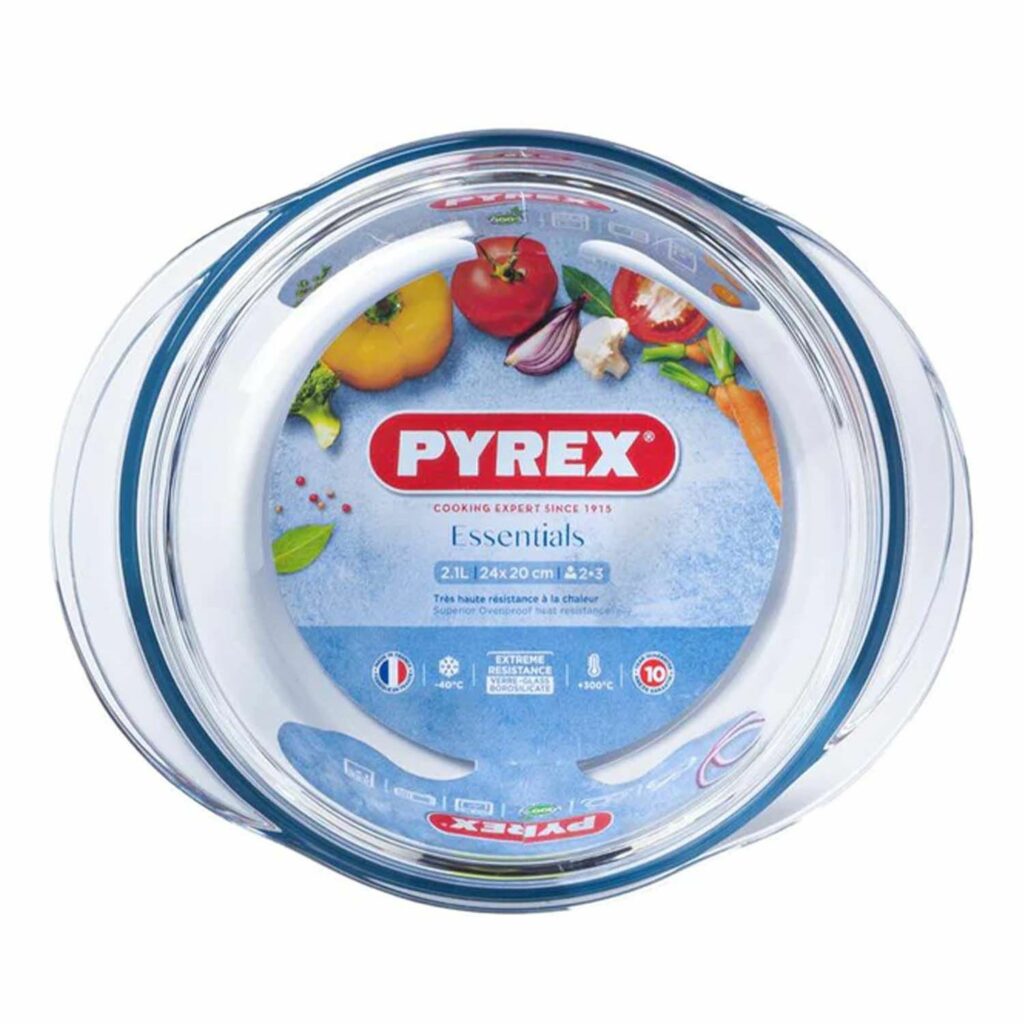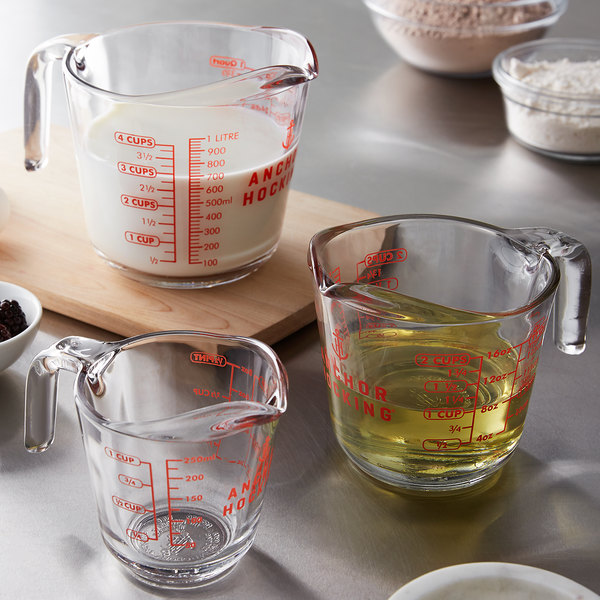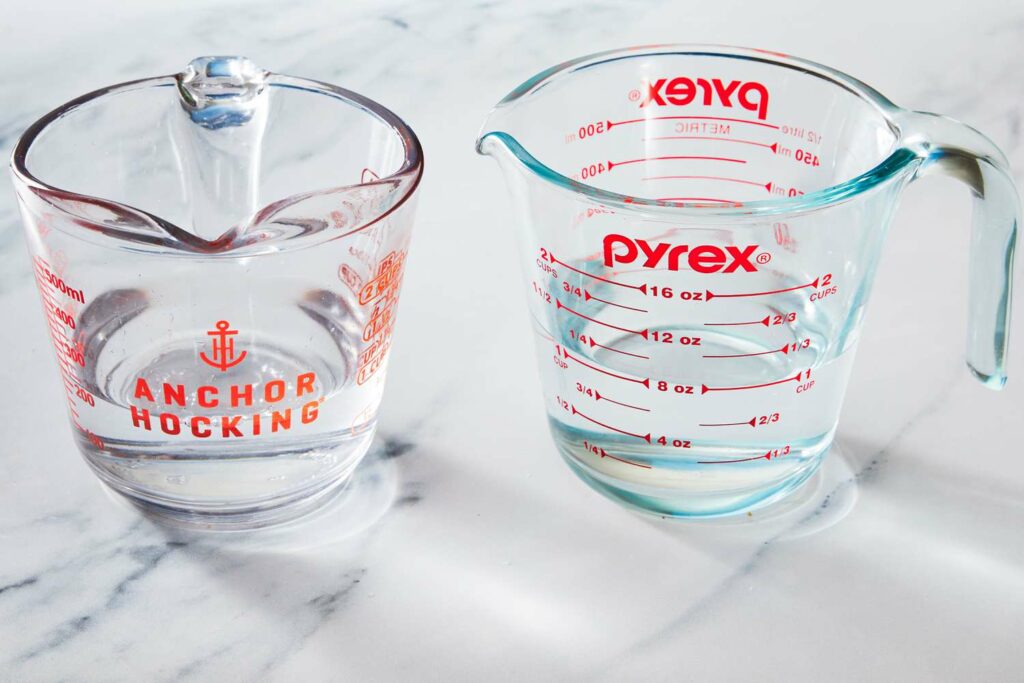|
Hey there, fellow culinary enthusiast! As you embark on this delectable journey through our articles, be prepared for a tantalizing adventure. Each click on our links could unveil delightful discoveries, possibly igniting your culinary creativity and, who knows, possibly adding a dash of sunshine to my day with a little commission from affiliate links. In other words, we sometimes earn a commission from partners listed. It's a win-win culinary rendezvous! |
When it comes to kitchenware, two names that often stand out are Pyrex and Anchor Hocking. These brands have been manufacturing a wide range of glass products for the kitchen for many years. Both are renowned for their quality and durability, but there are subtle differences between them that can influence your choice.
In this post, I’ll compare Pyrex and Anchor Hocking glass bakeware to help you decide the best fit for your kitchen needs. I’ll also share my own thoughts on which brand is best for most people.
By the end of this post, you’ll have all the information you need to choose the right glass bakeware for your kitchen.
So, let’s get started!
Contents
What Is Pyrex?

Pyrex is a brand of heat-resistant glassware and kitchenware that has been in production for over a century. It is known for its durable and versatile glass products, commonly used for baking, cooking, and food storage.
The key characteristic of Pyrex products is their ability to withstand high and low temperatures without shattering or warping. This makes them suitable for a wide range of kitchen tasks, such as baking in the oven, microwaving, and storing leftovers in the refrigerator or freezer.
Pyrex glassware is made from borosilicate glass, which is known for its resistance to thermal shock. This means it can go from extreme hot to extreme cold or vice versa without breaking.
In the past, most Pyrex products were made from borosilicate glass, but in recent years, some regions have seen a shift to soda-lime glass due to manufacturing changes. The differences in thermal properties between borosilicate and soda-lime glass have led to some debates and concerns among consumers regarding the brand’s durability.
Pyrex offers a wide range of products, including baking dishes, casserole dishes, mixing bowls, measuring cups, and food storage containers. These items are known for their transparency, which allows for easy monitoring of cooking or food storage, and they are often designed with handles, lids, and easy-to-read measurement markings for convenience in the kitchen.
Browse Pyrex Products on Amazon
Despite changes in manufacturing materials, Pyrex remains a popular and trusted brand for kitchen glassware and continues to be used by many home cooks and professional chefs around the world.
What Is Anchor Hocking?

Anchor Hocking is another well-known American brand specializing in glassware and glass products for the kitchen and home. The company was founded in 1905 in Lancaster, Ohio, and has a long history of producing glassware and related products.
Anchor Hocking is known for its glass bakeware, food storage containers, glass beverageware, and other glass items for use in the kitchen and home.
Similar to Pyrex, Anchor Hocking is known for its glass product’s durability and versatility. Many of its products are made from soda-lime glass, chosen for its strength and resistance to breaking under everyday use. Anchor Hocking’s glassware is often used for baking, cooking, serving, and food storage.
Some of the popular Anchor Hocking products include:
- Baking dishes and casserole dishes: Anchor Hocking offers a wide range of glass bakeware, from pie plates and casserole dishes to glass mixing bowls.
- Food storage containers: The brand provides glass containers with secure lids, which are commonly used for storing leftovers, meal prepping, and keeping ingredients fresh.
- Glass beverageware: Anchor Hocking produces glassware for various beverages, including drinking glasses, pitchers, and glass mugs.
- Jars and canisters: The brand also offers glass jars and canisters for storing dry goods like flour, sugar, and pasta.
Browse Anchor Hocking Products on Amazon
Anchor Hocking’s glassware is widely available and is a popular choice for consumers looking for reliable, affordable glass products for their kitchen and home needs. The brand has become synonymous with quality glassware, making it a trusted name in the industry for over a century.
What Are The Key Differences Between Pyrex And Anchor Hocking?
Now that we have an overview of both brands let’s delve into the key differences between Pyrex and Anchor Hocking.
1. Glass Composition and Durability
The primary difference between Pyrex and Anchor Hocking lies in the composition of the glass used in their products.
Pyrex glass is made from borosilicate glass, a type of glass known for its excellent thermal resistance. This means that Pyrex can go from the freezer to the oven without shattering due to extreme temperature changes.
Anchor Hocking, on the other hand, predominantly uses soda-lime glass for its products. While soda-lime glass is sturdy and durable, it is not as resistant to sudden temperature changes as borosilicate glass. This means you need to be more cautious when using Anchor Hocking glassware to avoid thermal shock.
In terms of glass composition, Pyrex has an edge in terms of thermal resistance. This makes it an excellent choice for bakeware and cookware, especially if you frequently transition between the freezer, oven, and microwave.
2. Price
Price is often a significant factor in choosing kitchenware. Let’s compare the cost of Pyrex and Anchor Hocking products:
Pyrex products are generally more expensive than Anchor Hocking due to the use of borosilicate glass, which is a pricier material. However, many users find that the investment is worth it, considering the quality and durability of Pyrex glassware.
The Anchor Hocking glassware is often more budget-friendly. This makes it an attractive choice for those looking for quality glass products without breaking the bank.
If you’re on a tight budget, Anchor Hocking might be the more appealing option. However, if you prioritize long-term durability and are willing to pay a bit more, Pyrex is worth considering.
3. Range of Products
Both Pyrex and Anchor Hocking offer a wide range of products to meet different kitchen needs.
Here’s a quick overview of what each brand has to offer:
Pyrex Range of Products
| Product Category | Description |
| Bakeware | Baking dishes, casserole dishes, pie plates, mixing bowls, measuring cups, and baking sets. |
| Cookware | Saucepans, frying pans, roasting dishes, and cookware sets. |
| Food Storage | Glass storage containers, food storage sets, and glass storage bowls. |
| Glass Drinkware | Glass cups, mugs, and drinking glasses. |
| Specialized Products | Glass baby bottles, laboratory glassware, and more. |
Anchor Hocking Range of Products
| Product Category | Description |
| Bakeware | Baking dishes, casserole dishes, and glass bakeware sets. |
| Food Storage | Glass storage containers, glass jars, and food storage sets. |
| Dinnerware | Plates, bowls, and glass drinkware. |
| Glass Drinkware | Glass cups, mugs, and drinking glasses. |
| Canisters | Glass canister sets for kitchen storage. |
| Ovenware | Oven-safe glass cookware and baking dishes. |
| Specialty Glassware | Glass items for specific purposes, such as custard cups and dessert dishes. |
The choice between the two brands in terms of product range largely depends on your specific kitchen needs. Both brands offer a variety of options to suit different cooking and storage requirements.
4. Appearance
The visual appeal of glassware is another factor to consider, especially if you plan to use it for serving dishes or storing food.
The Pyrex glassware is known for its clarity and typically features a blue tint. The clear glass allows you to see the contents of your dishes easily, making it an excellent choice for both cooking and presentation.
Anchor Hocking glass products are also clear, but they often have a slight green tint. While this tint does not affect the functionality of the glass, some users prefer the entirely clear appearance of Pyrex.
The choice of appearance is largely subjective. Some prefer the blue-tinted Pyrex glass, while others opt for the clear look of Anchor Hocking. It ultimately depends on your personal preference and how you plan to use the glassware.
5. Availability
Both Pyrex and Anchor Hocking products are widely available. However, the ease of finding them may vary depending on your location. It’s worth considering availability when choosing between the two brands.
Pyrex is a well-recognized brand, and its products are readily available in many kitchenware stores, department stores, and online marketplaces like Pyrex Amazon. You are likely to find a wide selection of Pyrex products in various sizes and styles.
Anchor Hocking products are also widely available, but their selection may not be as extensive as Pyrex. Availability can vary from region to region, so it’s a good idea to check local stores and online stores like their Anchor Hocking Amazon shop to see the range of Anchor Hocking products in your area.
Before making a decision, it’s a good idea to check the availability of the specific products you are interested in, as well as any local discounts or promotions.
6. Warranty
The warranty provided by the manufacturers can be an essential consideration when choosing between Pyrex and Anchor Hocking. A good warranty can provide peace of mind regarding the quality of the product.
Pyrex offers two years to a lifetime warranty on most of its products. This warranty covers defects in material and workmanship. If you encounter any issues within the warranty period, Pyrex will replace or repair the product at their discretion.
Anchor Hocking also provides a five to ten year warranty against defects in materials and workmanship. The duration and terms of their warranty may vary depending on the specific product, so it’s essential to check the warranty details for the item you’re interested in.
The warranty terms are relatively similar between the two brands. Still, it’s crucial to review the warranty information for the specific product you plan to purchase to ensure you are comfortable with the coverage provided.
7. Customer Reviews and Feedback
One of the best ways to gauge the quality and performance of a product is by considering the experiences of other customers. Reading customer reviews and feedback can provide valuable insights into the strengths and weaknesses of Pyrex and Anchor Hocking glassware.
Pyrex has a loyal customer base that often praises the brand’s durability, clarity, and resistance to temperature changes. However, some users have reported that Pyrex products manufactured in recent years are more prone to shattering under extreme conditions.
Anchor Hocking also receives positive reviews for its affordability and durability. However, some customers have reported issues with chipping and cracking, particularly when exposed to rapid temperature changes.
It’s essential to take customer reviews with a grain of salt, as individual experiences can vary. Be sure to consider the overall consensus when making your decision.
Conclusion: Which is Best – Pyrex or Anchor Hocking?
The choice between Pyrex and Anchor Hocking ultimately depends on your specific needs and priorities.
Here’s a summary of the key differences to consider:
- Glass Composition: Pyrex uses borosilicate glass, which is more resistant to thermal shock, while Anchor Hocking primarily uses soda-lime glass.
- Durability: Pyrex is less likely to break due to temperature changes and is more scratch-resistant. Anchor Hocking is durable but requires more care when handling extreme temperature changes.
- Price: Pyrex is generally more expensive than Anchor Hocking due to its use of borosilicate glass.
- Range of Products: Both brands offer a wide range of glass products for different kitchen needs.
- Appearance: Pyrex is known for its clear, blue-tinted glass, while Anchor Hocking products have a slight green tint.
- Availability: Check the availability of both brands in your area, as it may vary depending on location.
- Warranty: Review the warranty terms for the specific product you plan to purchase.
- Customer Reviews: Consider the experiences of other customers when making your decision.
In the end, if you prioritize thermal resistance and are willing to invest a bit more, Pyrex is an excellent choice, especially for baking and cooking. On the other hand, if you’re looking for budget-friendly glassware that is still durable and reliable when handled with care, Anchor Hocking may be the better option.
Ultimately, both Pyrex and Anchor Hocking have their strengths and are respected brands in the kitchenware industry. Your choice will depend on your personal preferences and how you plan to use the glassware in your kitchen.

